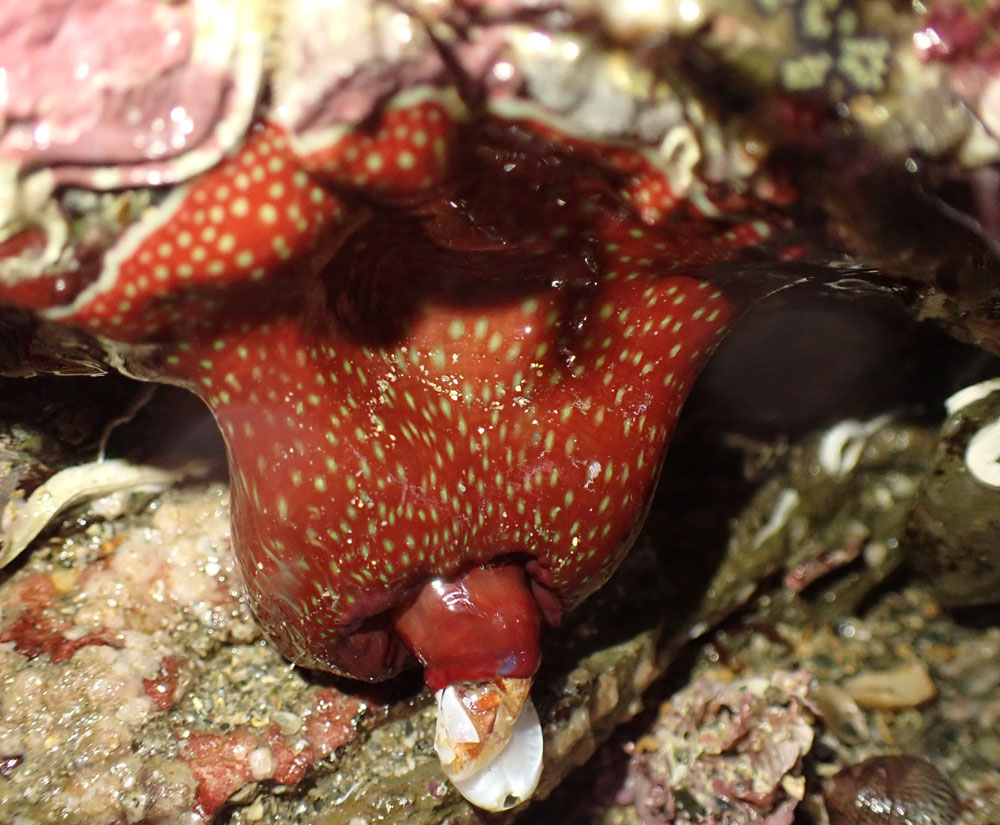Wild Roseland Nature Notes – December 2020
The lower shore – a great habitat to explore on your doorstep.
Why not explore a new Roseland wildlife habitat? The rocky shore at Pencabe headland, by Portscatho Harbour, is an exhilarating place to be as the sea level falls to the extreme low of equinoctial spring tides. Wonderful communities of plants and animals are exposed here for just a short time. Large kelps, with magnificent brown blades, are dominant. Elaborate holdfasts attach these huge plants to a rocky substrate.
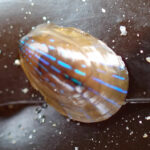 Out at sea forests of kelp protect our shores from wave battering and after storms we see heaps of ‘drift’ weed washed up on beaches. Hordes of tiny crustaceans feed on it and bacteria complete this vital recycling process – and remove the rotting weeds! Kelp forests are hugely important as ‘ecosystem engineers’ because they provide protection, food and homes for seaweeds and small animals in the subtidal zone. More efficient than trees at absorbing carbon dioxide, kelps are ‘carbon sinks’ and might help to slow climate change.
Out at sea forests of kelp protect our shores from wave battering and after storms we see heaps of ‘drift’ weed washed up on beaches. Hordes of tiny crustaceans feed on it and bacteria complete this vital recycling process – and remove the rotting weeds! Kelp forests are hugely important as ‘ecosystem engineers’ because they provide protection, food and homes for seaweeds and small animals in the subtidal zone. More efficient than trees at absorbing carbon dioxide, kelps are ‘carbon sinks’ and might help to slow climate change.
Forest Kelp is home to the red seaweed Dulse and you might spot groups of Blue-rayed limpets carving grooves as they munch through Oar Weed.
The Marine Project – what we do
Wild Roseland’s Marine Project aims to survey Roseland shores and develop a database of intertidal species. We begin at low tide, working our way up the shore as the tide comes in, searching rock pools, carefully looking under rocks and beneath curtains of red, brown and green seaweeds hanging from the walls of rocky chasms.
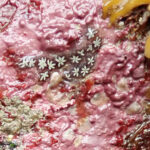 We use an Olympus Tough underwater camera – a fantastic piece of kit. We don’t need to risk dropping iPhones in rock pools! No need for ID books, pencils and paper on wet, windy shores. We can zoom in on living things under or above the water. The photos, when uploaded, help us to check our tentative identifications, and perhaps even find other creatures we didn’t know were there. A case in point is the beautiful Star Ascidian, a sea squirt colony of daisy-like individuals.
We use an Olympus Tough underwater camera – a fantastic piece of kit. We don’t need to risk dropping iPhones in rock pools! No need for ID books, pencils and paper on wet, windy shores. We can zoom in on living things under or above the water. The photos, when uploaded, help us to check our tentative identifications, and perhaps even find other creatures we didn’t know were there. A case in point is the beautiful Star Ascidian, a sea squirt colony of daisy-like individuals.
2020 – two Citizen Science events
Our surveys are part of two national Citizen Science Projects where volunteers help survey and monitor the distribution of marine animals and plants. The marine environment changes as the climate changes; species found are indicators of what’s happening on a larger scale.
September: Big Seaweed Search at Porthcurnick
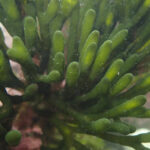 We enjoyed our fourth annual Big Seaweed Search in September when lockdown was more relaxed. The Rule of Six limited us to two small groups, one at the high tide mark and one on the lower shore. The permanent 200 metre long transect on Porthcurnick’s rocky shore was searched for 14 target seaweed species. Their distribution is affected by warming seas and ocean acidification plus an increase of invasive species like Wireweed. Warmer water is changing the distribution of some cold water seaweeds in the UK and red seaweeds with calcium ‘skeletons’ like Pink Plates, can be eroded by ocean acidification.
We enjoyed our fourth annual Big Seaweed Search in September when lockdown was more relaxed. The Rule of Six limited us to two small groups, one at the high tide mark and one on the lower shore. The permanent 200 metre long transect on Porthcurnick’s rocky shore was searched for 14 target seaweed species. Their distribution is affected by warming seas and ocean acidification plus an increase of invasive species like Wireweed. Warmer water is changing the distribution of some cold water seaweeds in the UK and red seaweeds with calcium ‘skeletons’ like Pink Plates, can be eroded by ocean acidification.
This year we found nine target species and sent photos to biologists at the Natural History Museum who monitor national findings. Channel Wrack was our most exciting find – just one precious clump of this cold water seaweed. It tolerates desiccation for long periods in the splash zone at the top of the shore.
October: Shoresearch survey at Pencabe
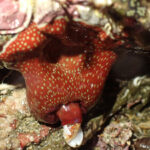 We’ve learned a lot from experts at Cornwall Wildlife Trust who run Shoresearch surveys on a variety of Cornish shores. Our group’s most recent local survey was carried out at Pencabe by just six volunteers in October.
We’ve learned a lot from experts at Cornwall Wildlife Trust who run Shoresearch surveys on a variety of Cornish shores. Our group’s most recent local survey was carried out at Pencabe by just six volunteers in October. 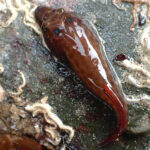 This ‘walk over survey’ is a simple time-limited search recording species found in a specific area. We were delighted to photograph 55 species in 90 minutes and will be uploading our results to the Shoresearch database. We saw the famous Cornish Clingfish, with its false turquoise eyes, and the hungry Strawberry Anemone. Next year we’ll try the more elaborate ‘transect survey with quadrats’ to drill deeper into the complexities of the intertidal ecosystem.
This ‘walk over survey’ is a simple time-limited search recording species found in a specific area. We were delighted to photograph 55 species in 90 minutes and will be uploading our results to the Shoresearch database. We saw the famous Cornish Clingfish, with its false turquoise eyes, and the hungry Strawberry Anemone. Next year we’ll try the more elaborate ‘transect survey with quadrats’ to drill deeper into the complexities of the intertidal ecosystem.
Join us in 2021 for an exciting intertidal experience on your local shore.
You might find Solar-powered Sea Slugs feeding on Green Sponge Fingers seaweed!
Call for volunteers
Surveying wintering birds on the Roseland.
Can you please help? Committed volunteers wanted.
The Roseland is currently under-recorded for birds of the coast, sea, rivers, estuaries, and marshes. For those of you who know your birds, or wish to know more, here is a chance to take part in the national WeBS survey for the BTO.
BTO is the British Trust for Ornithology, and the WeBS stands for the Wetland Bird Survey. You do not have to be a member of the BTO, although if you participate you will be required to register. Here is how it works.
Once a month, on a specific Sunday i.e., 13th December 2020, you would be allocated a site in your local area, dependent on your agreement. This would be negotiated through the WeBS Regional Organiser for Cornwall, Derek Julian, via David Hall.
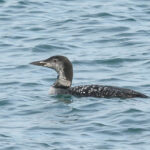 You would then download from the BTO tickbox sheet with all the birds you could possibly see in your site and would be simply asked to confirm what you see and the numbers present. Additionally, you would complete a time, place, weather, and tide indication on the same sheet.
You would then download from the BTO tickbox sheet with all the birds you could possibly see in your site and would be simply asked to confirm what you see and the numbers present. Additionally, you would complete a time, place, weather, and tide indication on the same sheet.
Then you would upload your completed information to the BTO. This is a well-established, important national survey. In fact, you would be joining around 3000 other observers, each studying their own patch somewhere else in the UK, on the same day.
Here on the Roseland, there is a need to cover the upper and lower Percuil river, Turnaware Point, Messack Point, and St Just Creek and Bar.
Gerrans Bay from Nare Head to Killigerran, and Ruan Lanihorne and Ardevora may need extra coverage, as the areas are so large.
To help you with identification we are hoping that Wild Roseland will show BTO bird ID guide videos, on our Facebook page, courtesy of Simon Taylor, the South West Regional Representative for the BTO.
Finally, if you are interested and want to see how it works you could join an experienced birder doing a count, before committing yourself.
Please contact me initially if you might wish to take part. David Hall hallruan@aol.com or 01872 501429.
Thank you for supporting Wild Roseland.
Contributors:
Article by Chris Townsend. Edited by Tara Robinson.
Wild Roseland is a group of volunteers who care passionately about looking after the nature and landscape of the Roseland peninsula in south Cornwall. Through a number of initiatives and projects, the aim is to inspire and enhance the conservation of this special place for all.
[[Usual social media links]]
Image credits:
Photos courtesy of Mary Asfour and Martin Ward

